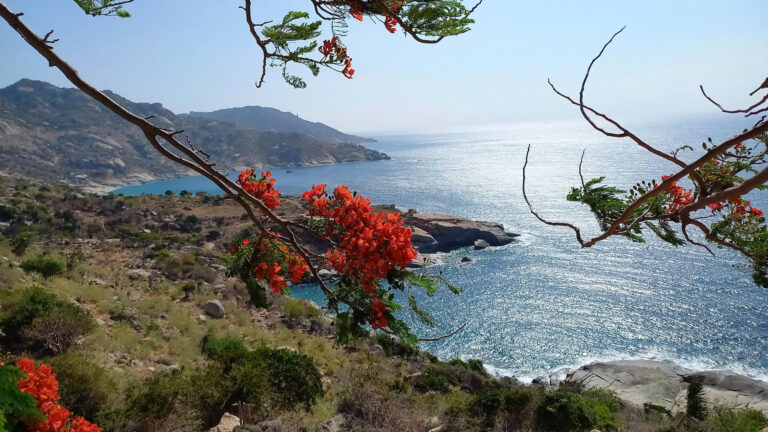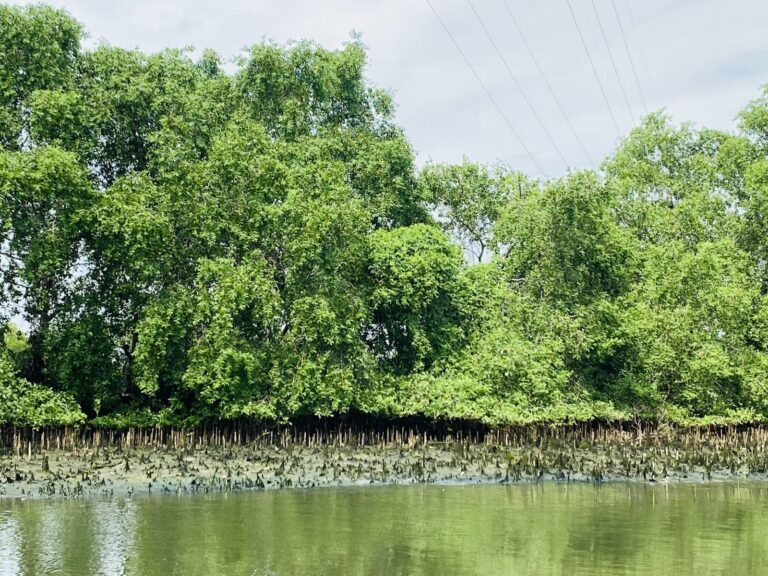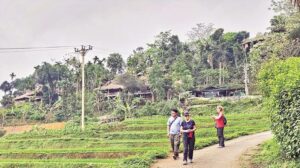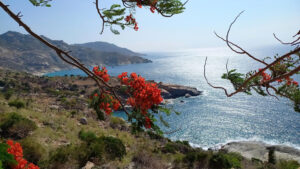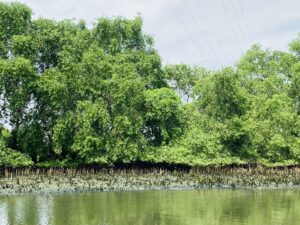Nature has granted Long An province Lang Sen land area, where it plays an important role in regulating water and reducing the impact of climate change for the Dong Thap Muoi area as well as the downstream area of the Mekong River Delta. Lang Sen Wetland Reserve, a unique destination for tourists, has been recognised as the world's Ramsar site.

Lang Sen Wetland Reserve
Located in Tan Hung district, around 90 kilometres from Tan An city, Long An province, the reserve spreads over 5,000 hectares. In any season, the reserve features beautiful natural scenery.
According to Vo Van Hien's family, at Cai Sach hamlet, Vinh Loi commune, Tan Hung district, who have lived in the buffer zone of the Lang Sen Wetland Reserve, during the resistance war against the US, the forest under the Lang Sen Wetland Reserve is a revolutionary base. For that reason, from 1965 to 1970, the land suffered many bombing attacks. When the old melaleuca forest dies, the new melaleuca forests rose and continue to cover a beautiful green colour. After the liberation of the South, it can be said that the most beautiful season of Lang Sen land area is the time when melaleuca are in bloom, and there are endless golden rice fields.
Ramsar Lang Sen is located in the 5,000-hectar areas of Vinh Loi, Vinh Dai and Vinh Chau communes of Tan Hung district. In particular, the core ecological area of melaleuca forest is 2,000 hectares, the rest is economic melaleuca forest and a buffer zone for agricultural production. According to Nguyen Cong Toai, the Deputy Director of Lang Sen Wetland Reserve, the characteristic of Lang Sen wetland ecosystem includes: melaleuca forests, rice fields, seasonally flooded grasslands, woody vegetation, and morass along the river, along with diversified botany, especially a variety of lotus, water lilies, rice, pipe grass and water hyacinth.
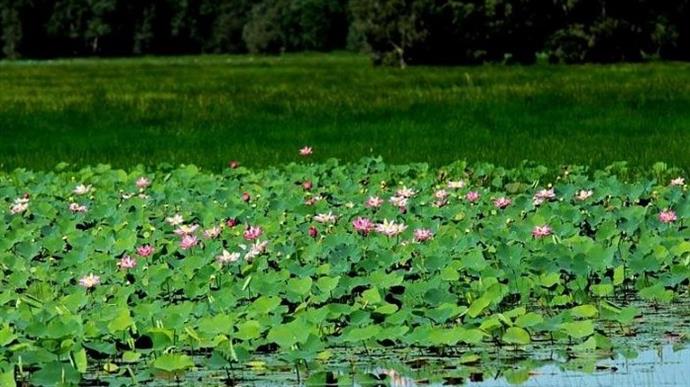
The characteristic of Lang Sen wetland ecosystem includes:melaleuca forests, rice fields, seasonally flooded grasslands, woody vegetation,and morass along the river, along with diversified botany, especially a variety of lotus. (Photo:đaioanket.vn)
The wetland is home to 148 wetland-dependent bird species, with 20,000 individual waterbirds, including the globally threatened sarus crane and greater adjutant, white-winged duck, barn owl, white-rumped shama, spoonbill, ibis, peafowl, painted stork, common teal, mallard and kingfisher.
Lang Sen Wetland Reserve is considered a favorable area for restoring the grassland and the area of many waterbirds and vertebrates. In the core zone of Lang Sen Wetland Reserve, there are 12 sub-zones surrounded by Vam Co Tay River and separated residential areas. Under the canal No.79 of the wetland reserve is home to more than 78 freshwater aquatic species, of which 27 species in Mekong River, such as Tra fish, giant mudfish, and Henicorhynchus. The Lang Sen Reserve is a typical example of the Dong Thap Muoi Wetlands ecosystem in Vietnam's Cuu Long (Mekong) Delta thanks to its ecological diversity. As a result, Lang Sen Wetland Reserve was recognised as the seventh Ramsar site in Vietnam and 2,227th of the world. The site is considered as a miniature Dong Thap Muoi, attracting more and more tourists and domestic and foreign researchers to come and enjoy and learn.
In order to conserve and enhance economic value in Lang Sen biodiversity area, in years gone by, the local authorities have collaborated with World Wildlife Fund (WWF) to implement a variety of smart agricultural models, with the participation of 150 members from nine local farmer groups.
With a revolving fund of nearly VND 1 billion supported by the WWF, the management board of the Ramsar has supported households, who are making a livelihood from aquaculture, growing mushrooms and growing rice in the buffer zone of the reserve, to apply high technology; in addition, the management board also invite engineers and scientists to guide farmers to reduce greenhouse gas emissions and save seeds, water, and agricultural supplies. In addition, Long An province is appealing to entrepreneurs to invest in resorts, where visitors can stop to enjoy the unspoiled wild beauty of this biodiversity area.
Deputy Chairman of Long An Provincial People's Committee Pham Van Canh said, in order to promote the value of Lang Sen Wetland Reserve, the province has planned the conservation area to protect many precious and rare animals and plants. For the buffer zone located in Lang Sen wetland conservation planning area, the province has also instructed the locality to promote the application of advanced technology to raise the income per unit area and life in each household.


